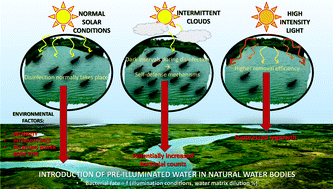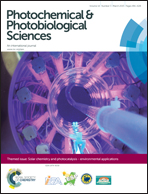Environmental considerations on solar disinfection of wastewater and the subsequent bacterial (re)growth
Abstract
In this work, solar disinfection of wastewater was studied, focusing on the effect of selected environmental variables, namely light intensity, continuous/intermittent light delivery, and post-irradiation storage as well as dilution in lake water. These variables were studied for their effect on the disinfection efficiency and on post-irradiation survival/regrowth in undiluted wastewater and in wastewater diluted in lake water at different dilution rates. The bacterial inactivation curves were studied, and distinct kinetic phases were identified and interpreted. The dose primarily influenced the demonstration of phases and total inactivation times, independently of the irradiance. Intermittent illumination unevenly prolonged the required exposure time and highlighted the need for extended illumination times when unstable weather conditions are expected. Post-irradiation survival/regrowth in undiluted wastewater showed three distinct kinetic profiles, with transitions among them largely determined by the applied light dose. Lower doses resulted in similar inactivation profiles to the higher ones, when irradiation was followed by prolonged storage at high dilution rates in lake water. The studied factors show significant design and operation implications for solar wastewater applications based on local environmental conditions and water receptor restrictions.

- This article is part of the themed collection: Solar Chemistry and Photocatalysis - environmental applications

 Please wait while we load your content...
Please wait while we load your content...